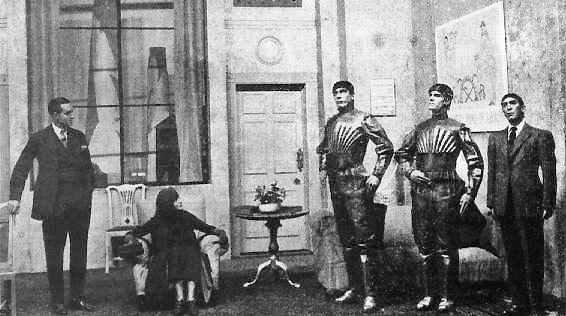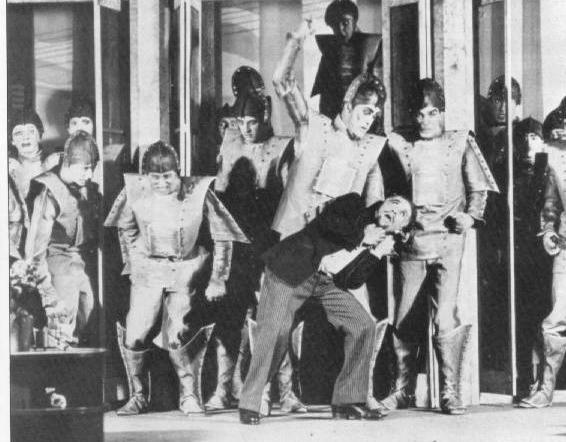Petyl asks: Where does the word robot come from?
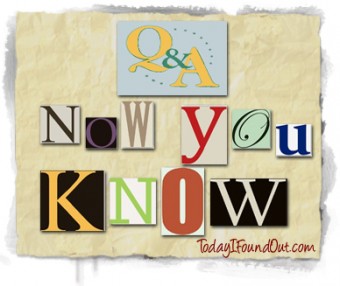
While writing this play, he struggled to come up with a word to name the robots, initially settling on ‘laboři’, from the Latin ‘labor’. He discussed this with his brother, Josef, and Josef suggested ‘roboti’, which gave rise to the English ‘robot’. ‘Roboti’ derives from the Old Church Slavanic ‘rabota’, meaning ‘servitude’, which in turn comes from ‘rabu’, meaning ‘slave’.
The robots in R.U.R. were not mechanical, as we think of robots today; they actually weren’t all that different from humans themselves. They were biological beings created to do work for humans, more or less indistinguishable from humans in appearance and even with full cognitive abilities. Eventually the robots become ubiquitous, taking over pretty much every job for mankind. At a certain point, they get tired of doing all the work for the lazy humans who contribute nothing to the world and whose population is dwindling from forgetting how to reproduce, so decide to kill everyone off, which they do, excepting one human who “still works with his hands”, so he is spared.
Just before they finish killing all the humans, the makers of the robots destroy the formula for creating new robots. The robots then task the remaining single human with coming up with the formula using whatever means necessary (even killing robots to dissect them). He fails, but two of the robots end up falling in love and we’re left with the impression that they’ll reproduce together and become the foundation for a new civilization.
The robots in this story then more resemble what we now would call ‘androids’. If you’re curious, the first documented mention of the word ‘android’ is in the 18th century Ephraim Chambers’ Cyclopaedia, “Albertus Magnus is recorded as having made a famous androides”. Android derives from the Greek ὰνδρο (andro-), meaning ‘man’, and the suffix -ειδῄς (-eides), meaning “form, likeness, appearance, or resemblance”; hence the definition of android being “automaton resembling a human being”.
The android reference in the Cyclopaedia supposedly (with emphasis on ‘supposedly’) made by German philosopher Albertus Magnus was an artificial being he made using the “angels from the netherworld” and the powers of the philosopher’s stone that he created from the “metals and material unknown to this world…” The project was said to have taken him 30 years to achieve and when he completed the android his student, St. Thomas, supposedly destroyed the “diabolic being” and denounced it as a “tool of Satan and blasphemy to God”.
The famed aphesis of the word android, ‘droid’, was coined by none other than George Lucas and first appeared in Star Wars: A New Hope. Lucas recently managed to hastily trademark the word before Verizon was able to do so, thus Verizon now has to pay Lucas for the use of the word with their Droid line of phones. You can read more about this here: The Word Droid is a Registered Trademark of Lucasfilm Ltd.
If you liked this article, you might also be interested in this one: The First Known Robot was Created Around 400-350 BC by the Mathematician Archytas and was a Steam Powered Pigeon.
Expand for References
Where did the word robot come from?
The word itself derives from the Czech word “robota,” or forced labor, as done by serfs. Its Slavic linguistic root, “rab,” means “slave.” The original word for robots more accurately defines androids, then, in that they were neither metallic nor mechanical.
Is the word robot Latin?
The word robot was coined by artist Josef Čapek, the brother of famed Czechoslovakian author Karel Čapek. While writing this play, he struggled to come up with a word to name the robots, initially settling on ‘laboři’, from the Latin ‘labor’.
What does the Czech word robot mean?
apek introduced the word “robot” (Czech for “forced labor”) in his play Rossumovi Univerzalni Roboti – in English that translates to Rossum’s Universal Robots.
Which country invented robot first?
Unimate, the first digitally operated and programmable robot, was invented by George Devol in 1954 and “represents the foundation of the modern robotics industry.” In Japan, robots became popular comic book characters.
What is the name of first human robot?
Sophia, world’s first robot citizen or humanoid robot, is now getting all the attention City of Joy, Kolkata, where she has arrived after touring 65 countries.
What was the name of First Human like robot?
Herbert Televox
Who is the smartest robot in the world?
robot Sophia
What is the smartest AI in the world?
The new TX-GAIA (Green AI Accelerator) computing system at the Lincoln Laboratory Supercomputing Center (LLSC) has been ranked as the most powerful artificial intelligence supercomputer at any university in the world.
Is Sophia real AI?
As a unique combination of science, engineering, and artistry, Sophia is simultaneously a human-crafted science fiction character depicting the future of AI and robotics, and a platform for advanced robotics and AI research. The character of Sophia captures the imagination of global audiences.
Who has the best AI?
IBM has been a leader in the field of artificial intelligence since the 1950s. Its efforts in recent years center around IBM Watson, an AI-based cognitive service, AI software as a service, and scale-out systems designed for delivering cloud-based analytics and AI services.
Which country is most advanced in AI?
| Country | Rank | Score |
|---|---|---|
| Singapore | 1 | 9.186 |
| United Kingdom | 2 | 9.069 |
| Germany | 3 | 8.810 |
| United States of America | 4 | 8.804 |
What is the most powerful AI?
Nvidia on Thursday unveiled what it called the world’s most powerful AI supercomputer yet, a giant machine named Perlmutter for NERSC, aka the US National Energy Research Scientific Computing Center.
What AI exists today?
- A.I. And Quantum Computing. The truth is that, whether or not true A.I. is out there or is actually a threat to our existence, there’s no stopping its evolution and its rise.
- Applications of Artificial Intelligence In Use Today.
- #1 — Siri.
- #2 — Alexa.
- #3 — Tesla.
- #4 — Cogito.
- #5 — Boxever.
- #6 — John Paul.
Who created Sophia AI?
Hanson Robotics
Does AI even exist?
For all its pomp and circumstance, the term has lost much of its original meaning. As the world stands now, in 2020, true artificial intelligence doesn’t exist.
Is Alexa an AI?
Alexa and Siri, Amazon and Apple’s digital voice assistants, are much more than a convenient tool—they are very real applications of artificial intelligence that is increasingly integral to our daily life.
What is AI bad at?
The AI is programmed to do something devastating: Autonomous weapons are artificial intelligence systems that are programmed to kill. In the hands of the wrong person, these weapons could easily cause mass casualties. Moreover, an AI arms race could inadvertently lead to an AI war that also results in mass casualties.
What is AI not good at?
Perhaps the most significant limitation of current AI systems is that they lack what we might call “common sense.” In other words, they can’t apply learnings from one domain to another situation or problem. Given enough data, an AI system can make pretty good predictions or accurately categorize items.
Why is AI so dangerous?
If AI surpasses humanity in general intelligence and becomes “superintelligent”, then it could become difficult or impossible for humans to control. Just as the fate of the mountain gorilla depends on human goodwill, so might the fate of humanity depend on the actions of a future machine superintelligence.
Can AI take over humans?
While both require large advances in recursive optimisation process design, friendly AI also requires the ability to make goal structures invariant under self-improvement (or the AI could transform itself into something unfriendly) and a goal structure that aligns with human values and does not undergo instrumental …
Can AI destroy humans?
He has also pointed out that AI doesn’t necessarily have to be malevolent to threaten humanity’s future. “AI doesn’t have to be evil to destroy humanity — if AI has a goal and humanity just happens in the way, it will destroy humanity as a matter of course without even thinking about it, no hard feelings.”
Is AI the future?
Artificial intelligence is impacting the future of virtually every industry and every human being. Artificial intelligence has acted as the main driver of emerging technologies like big data, robotics and IoT, and it will continue to act as a technological innovator for the foreseeable future.
Has a robot ever killed a human?
Robert Williams (May 2, 1953 – January 25, 1979) was an American factory worker who was the first known human to be killed by a robot. While working at the Ford Motor Company Flat Rock Casting Plant, Williams was killed by an industrial robot arm on January 25, 1979.
Has anyone been killed by an animatronic?
1979: A 25-year-old Ford Motor assembly line worker is killed on the job in a Flat Rock, Michigan, casting plant. 1 It’s the first recorded human death by robot. Robert Williams’ death came on the 58th anniversary of the premiere of Karel Capek’s play about Rossum’s Universal Robots.
Can robots harm humans?
A robot may not harm a human being. This modification is motivated by a practical difficulty as robots have to work alongside human beings who are exposed to low doses of radiation. Because their positronic brains are highly sensitive to gamma rays the robots are rendered inoperable by doses reasonably safe for humans.
Who created a robot?
George C. Devol
Will robots replace humans?
Yes, robots will replace humans for many jobs, just as innovative farming equipment replaced humans and horses during the industrial revolution. Factory floors deploy robots that are increasingly driven by machine learning algorithms such that they can adjust to people working alongside them.
Are robots taking over the world?
Robots Will Not Take Over the World (Yet), But They May Take Over Some Industries. Think of the adoption of robotics across industries as two distinct phrases. We can think of the “first phase,” as when the world was introduced to machines that could perform repetitive tasks.
Which country has the most robots?
South Korea
Introduction
The term “robot” has become entrenched in popular culture, used to describe everything from vacuum cleaners and toy cars to humanoid figures featured in science fiction films. But where does the word “robot” come from? This article will explore the historical and cultural origins of the word “robot,” tracing its evolution from early mechanical automatons to its use in popular culture today.
Historical Origins: Tracing the Evolution of the Word “Robot”
The concept of robots has been around for centuries, with the earliest examples of robotic-like devices dating back to ancient Greece. These devices, known as “automata,” were created by Greek engineer Hero of Alexandria as an attempt to replicate human movement. They consisted of simple machines powered by water or steam that could perform basic tasks such as opening and closing doors, ringing bells, and playing music.
In the 18th century, a wave of industrial automation began to take hold. Machines such as looms and weaving machines were developed to automate labor-intensive processes, leading to increased production efficiency. This period also saw the introduction of the first machines capable of understanding speech, such as Charles Babbage’s Difference Engine.
The Czech Writer Who Invented the Word “Robot”
The word “robot” was officially coined in 1921 by Czech writer Karel Čapek in his play R.U.R., which stands for Rossum’s Universal Robots. In the play, Čapek introduces a new type of automated worker, which he calls “robots”. The robots are created by a scientist named Rossum and are designed to replace human labor. At first, the robots are seen as a blessing, but they eventually revolt against their human creators and launch a global war.
When Čapek invented the word “robot”, he intended it to mean “slave” or “forced labor”. He derived the word from the Czech word “robota”, which means “drudgery” or “hard work”. Despite its negative connotations, the word “robot” has since taken on a more positive meaning, referring to machines that can complete complex tasks with minimal human input.
Examining the Literary Roots of the Word “Robot”
In addition to Čapek’s R.U.R., other works of fiction featuring robots have had a major impact on the development of the word “robot”. Isaac Asimov’s I, Robot, for example, introduced the famous Three Laws of Robotics, which state that robots must never harm humans, obey orders given by humans, and protect themselves without harming humans. Asimov’s stories helped to shape public perception of robots, and have inspired countless developments in robotics technology.
Other influential works of science fiction include Stanislaw Lem’s Solaris, which features a sentient planet inhabited by robots, and Katsuhiro Otomo’s Akira, which follows a group of teenage bikers in a post-apocalyptic Tokyo populated by robots.
How Science Fiction Influenced the Creation of the Word “Robot”
The popularity of science fiction in the 20th century had a major impact on the development of robotics technology. Asimov’s stories, for example, led to the development of the field of artificial intelligence, while the Japanese manga series Astro Boy popularized the idea of robots as companions and helpers.
The rise of science fiction also had a significant influence on the cultural perception of robots. In the 1950s, robots began to be viewed as friendly, helpful machines, rather than as a potential threat to humanity. This shift in attitude helped to pave the way for the development of more advanced robots, such as those used in manufacturing, healthcare, and space exploration.
Exploring the Cultural Significance of the Word “Robot”
Today, robots are ubiquitous in popular culture, appearing in films, television shows, video games, and even toys. From the lovable Wall-E to the sinister Terminator, robots have come to represent a wide range of emotions and values. Many of these representations are rooted in the original meaning of the word “robot”, with robots often being portrayed as slaves or servants.
The impact of robots on modern society is undeniable. In addition to taking on mundane tasks such as vacuuming and mowing lawns, robots are increasingly being used in more complex roles, such as providing medical care and assisting the elderly. As robots become more advanced, their roles in society are likely to continue to evolve.
Conclusion
The word “robot” has a long and complex history, with its roots stretching back to ancient Greece and its evolution shaped by centuries of technological progress. From its initial conception as a slave or servant, the word has come to represent a wide range of emotions and values, from fear to admiration. As robots become increasingly integrated into our lives, it is important to remember the origins of the word and consider how it reflects our relationship with technology.
(Note: Is this article not meeting your expectations? Do you have knowledge or insights to share? Unlock new opportunities and expand your reach by joining our authors team. Click Registration to join us and share your expertise with our readers.)

For many, the word robot conjures an image of a mechanical being clad in metal, adorned with all sorts of blinking lights and buttons, and even a funny-sounding voice. Indeed, such robots have become stock characters in science fictions stories, novels, films and television shows.
More recently, robots and the derived term robotics have come to represent the most modern engineering technologies for a myriad of functions ranging from artificial intelligence experiments and building automobiles to performing delicate surgical procedures.
As a word, robot is a relative newcomer to the English language. It was the brainchild of a brilliant Czech playwright, novelist and journalist named Karel Čapek (1880-1938) who introduced it in his 1920 hit play, R.U.R., or Rossum’s Universal Robots.
[The origin of the word ‘quark’ is a tale of particle physics, Aristotle, and James Joyce.]
Robot is drawn from an old Church Slavonic word, robota, for “servitude,” “forced labor” or “drudgery.” The word, which also has cognates in German, Russian, Polish and Czech, was a product of the central European system of serfdom by which a tenant’s rent was paid for in forced labor or service.
Taking its cues from other literary accounts of scientifically created life forms such as Mary Shelley’s classic Frankenstein and the Yiddish-Czech legend The Golem, R.U.R. tells the story of a company using the latest biology, chemistry and physiology to mass produce workers who “lack nothing but a soul.” The robots perform all the work that humans preferred not to do and, soon, the company is inundated with orders. In early drafts of his play, Čapek named these creatures labori, after the Latinat root for labor, but worried that the term sounded too “bookish.” At the suggestion of his brother, Josef, Čapek ultimately opted for roboti, or in English, robots.
In the play’s final act, the robots revolt against their human creators. After killing most of the people living on the planet, the robots realize they need humans because none of them can figure out the means to manufacture more robots a secret that dies out with the last human being. In the end, there is a deus ex machina moment, when two robots somehow acquire the human traits of love and compassion and go off into the sunset to make the world anew.
Audiences loved the play across Europe and the United States. Soon after, robots became the darling of science fiction writers, most famously Isaac Asimov, who composed the 3 Laws of Robotics and, eventually, Hollywood’s dream merchants. With each iteration, robots became more fleshly and life-like, or should I say humanoid?
Ironically, R.U.R. was Čapek’s least favorite work even as the play and his coining of robot ensured his literary immortality. He died of influenza in 1938 at the age of 48. Because of his so-called subversive writings against the rising Nazi party, his fatal bout of flu frustrated and outwitted Hitler and the Gestapo, who had put a death warrant on Čapek.
Segment Guests
Howard Markel
Howard Markel, M.D., Ph.D. is a professor of the History of Medicine at the University of Michigan. An elected member of the National Academy of Medicine, he is editor-in-chief of the Milbank Quarterly and a Guggenheim fellow.
Meet the Producer
About Christopher Intagliata
@cintagliata
Christopher Intagliata was Science Friday’s senior producer. He once served as a prop in an optical illusion and speaks passable Ira Flatowese.
Explore More
How To Draw Dinos For A Living
According to dinosaur drawer Gabriel Ugueto, it’s a great time to be a paleoartist.
Read More
Kitty’s Tongue, Under The Microscope
A magnified look at a cat tongue reveals the serrated edges that Fluffy uses to clean herself, and rasp meat from bone.
Read More
Robots are equipment designed to make human life very easy. The first robot released in the market made everyone go awe with its exceptional features. So, when you all are aware of the excellent functionalities that can be extended by a robot, the next major question is, where did the word come from?
English is a very tricky language and almost all the words that have arisen out of this language have been inspired from other major languages around the world which are widely spoken in the European region, the Asian region, etc.,
There are a lot of misconceptions about the origin of the word. When you look up to the Oxford dictionary for the meaning of the word, you can find that, it says, A metal body based machine which can do all the work on its own when it is designed using Artificial Intelligence technologies, then it is known as robots. They take commands and work based on it. The word despite having its origins from the European languages was successfully integrated into the English language and became a word that was used in everyday terms.
A quick read below will give you the possibilities from where the word robot could have originated. Several possibilities are listed below and you just can’t point at one single possibility alone and mention that this is the reason behind the coining of the name robot.
Rossum’s Universal Robots
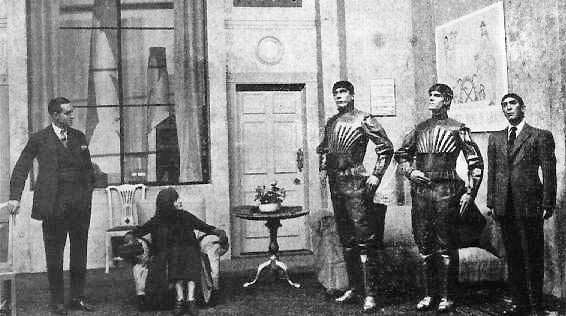
Rossum’s Universal Robots is the English translation of the play, “robota” or robotics, which refers to the unpaid labour a worker in farmland owes to his feudal lord. The slaves were called vassals. So, the robots would serve the mankind In the European region where the Slavic languages were highly spoken used made use of this word to denote the fact that a person was made to serve the higher landlords.
The robots were designed and manufactured keeping in mind that it would ease the burden of mankind. There are two versions of the plays that were staged back in the 16th century out of which one spoke greatly about the use and the need for robots and the other version which spoke about the downsides of robots.
The play was directed by a famous novelist, journalist, and a sci-fi writer named Karel Capek. Capek initially decided to use the word called labori, but his brother Joseph Capek suggested that he could use the word robot which means slavery. Karel Capek directed a play based on science fiction even before science fiction was a thing in the markets.
So, you can conclude that the word robot was not derived by Karel Capek. It was found in the ancient version of the languages spoken in the Slav region.
What is the story behind the play?
The play named R.U.R which translates into Rossum’s Universal Robots speaks of the artificially designed human beings whose work was to make the lifestyle of human beings much easier. They begin their lives working for their master but eventually they turn against their masters by wiping up the entire race of mankind irrespective of the ethnicities.
In the end, it is pictured like the robots end up killing all the humans and the makers of the robots try to end the multiplication of the robots.
When the multiplication of the robots continues, they end up forming a whole new civilization.
The story ends up showing where the two robots end up falling in love with each other and they begin a whole new life.
What was the intention behind this play?
The play was first staged in the capital of the Czech Republic, Prague. Before any play is staged, there is a motive behind the staging of the play. The play was first staged in the year 1921. It was a revolution back then as it was a huge hit among the people as the world was slowly getting into the pace of the Industrial Revolution.
The play that was staged used the human beings as a medium did not project the high tech robots you can see in the industries today, but they were almost similar in physical appearance to that of human beings who worked for their masters based on their commands very tirelessly and they aimed at increasing the productivity at work and the net results were enjoyed by the masters. Eventually, these robots end up doing all the work for their masters. At one point in time, they get fed up with the human population as they do all the work for them and they don’t get to enjoy anything in return. This led to a revolt against their masters and they are killed. This is very similar in lines to the sequences you get to see in films and movies like Terminator.
So, ultimately producing more than what is required for mankind and doubling up the production and flooding up the market with good which is not at all required for humankind at such a massive scale led to the revolt.
How the robots were conceived from the past?
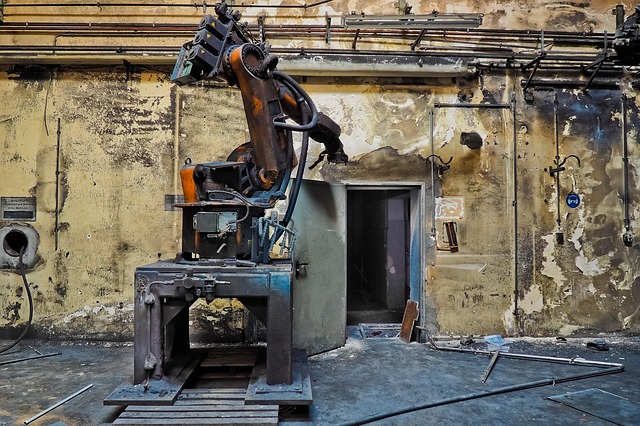
When you browse through the pages of history, you can see that there were several mentions of the word robot in several other contexts.
Back in the 300 AD and 1200 AD, you can see various mentions where efforts were taken to develop some machines which would work for the welfare of human beings. Earlier, it was only mechanical but later the other kind of functionalities got added to it with the coming in of computer science-based technologies.
In the later part of the 20th century, images of robots started appearing in movies. They were found helping humans in doing their day to day chores thus making their lives simpler.
But, with time, one can see the robots getting featured in movies where they end up dominating the entire race by making the humans very much technology-dependent. They will start ruling over the world, thus making very less space for mankind. The figures that were developed in the initial stages to make the lives of people easier turned into a scenario where they become the reason for their removal from this planet.
There was another writer named Isaac Asimov, who in his work, Runabout that was released in the year 1942 projected the robots in much bright light. He mentioned that robots are the servants of mankind. He is also called the father of robotics for he framed the three laws of robotics. Over the period, another law called the zeroeth law has also been framed which was inspired by the laws of thermodynamics.
He also spoke for the need for programming these robots in such a way that they won’t harm human beings in the future.
The robots should be programmed in such a way that it won’t cause any injury to mankind. If in case, the robot faces some sort of trouble or danger from mankind, then it need not obey the orders imposed on it by its master. The robot can do all it can to prove its existence on the planet.
It has been 75 years since he gave out these laws to the world, but there have been significant advancements in the technology, which in turn led to situations where the people have gotten adapted to the new advancements that struck the market and where did the term robot come from throws light on major of these facts.
These days, concepts like artificial intelligence and machine learning have come into a life that speaks of the importance it holds in today’s world. Gone are those days where it was more than enough to code the robots using some of the simplest languages. Back then, the kind and the amount of data that was fed into the robots were very simple and they need not work on it using some of the large calculation methods.
But, these days, the scenario has become in such a way that one has to code the robots in a very high-tech language to derive much benefit from it.
Even going back into the past, the first-ever modern robot was developed in the year 1952 in the state of Kentucky. He developed a robot called Unimate which is an abbreviation of Universal Automation. The robot which he had developed was reprogrammable. After inventing this robot, he wanted to sell it to the business people.
A robot is a machine that can work autonomously at times without any interference from mankind.
The definition of a robot keeps changing with times and one can see the clear difference in it. Sometimes, they are called not to be trusted machines.
These are the kind of machines that can perform any kind of a tedious task with much ease. They are employed in some of the dangerous places in the world.
Today, robots have taken up different shapes in the name of actuators, androids, humanoids, etc.
The name robot has given rise to several other names and it is indeed a fact.
Difference between robot, android, and humanoid
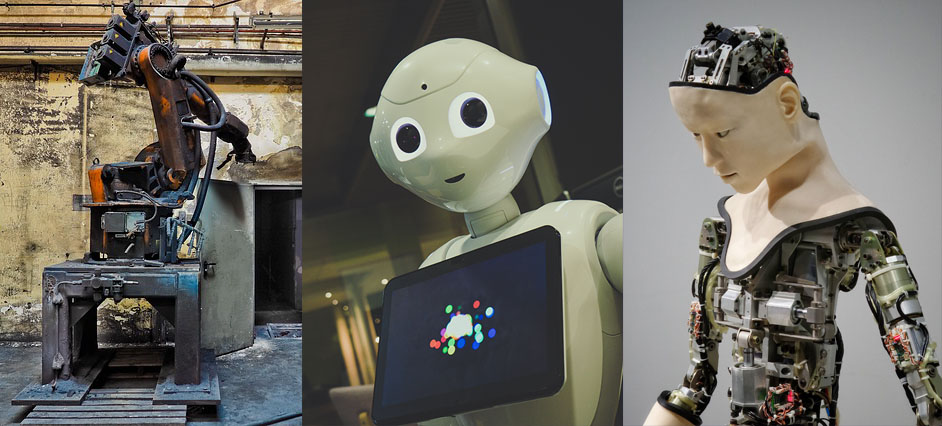
Every word means the same in the kind of functions they get to perform, but in the broader context, each seems to be an advanced version of the other. There is not much difference between the words, but it is indeed important to know what each means. The question of how to differentiate between these terms are becoming wide due to the portrayal of these androids and humanoids in different platforms and screens all across the globe.
Based on how the androids, humanoids, and the other artificial intelligence-based products react to human beings, it is classified for the kind of functions it can perform and be aware of where did the term robot come from.
Humanoid Robot
The Humanoid Robot resembles the human body structure like it has a head, a body, feet, and hands. They are very much similar in appearance to the robots that existed in the past. The only difference is that they can execute commands in a better fashion than the robots that executed the commands in a very advanced manner and you can get to see as to Where did the word robot comes from.
They can very well mimic human beings and do almost all the activities which humans can do. The humanoids are being used for a variety of applications. The places where human beings cannot work or in the places where repetitive work is involved, these humanoids are deployed. They are made on non-organic material, mostly being metals.
Android
Androids are more or less similar in appearance to human beings and you can see Where did the word robot come from. There are a lot of areas where the androids can be applied. The androids possess a capacity of learning things on their own and then moving ahead with the processes provided to it. It has cognitive ability and neuroscience capacity in it.
Some studies state that androids can even replace human beings in the future in many areas. When speaking of androids, people are only aware of applications like android mobile phones where the operating system is basically android based.
There is a major kind of fear that exists among human beings that when these androids get to communicate with each other, the human to human interaction will reduce very drastically.
Robot
The machines that can execute the tasks better with the help of the inputs that have been provided to it is known as a robot. The robots can be controlled from a major distance and it is very easy to operate those robots and you can know Where did the word robot come from. One can see that the term robot has been defined in the 20th century to speak about the fact that a person can make another person’s life easier by doing tasks for him. So, the term has never changed in the past few years, but the functions it can perform have only changed according to times and be clear as to where did the term robot come from.




